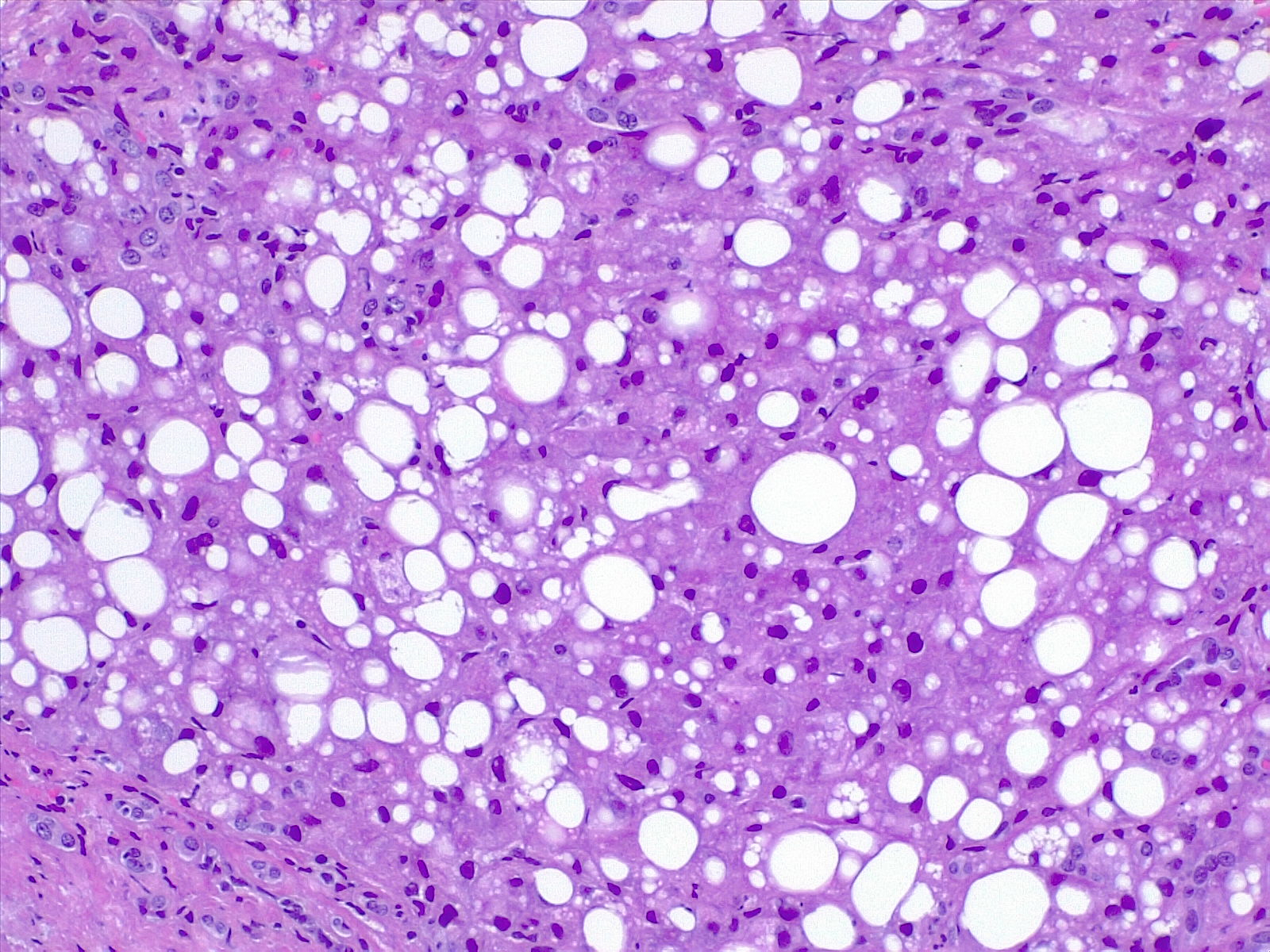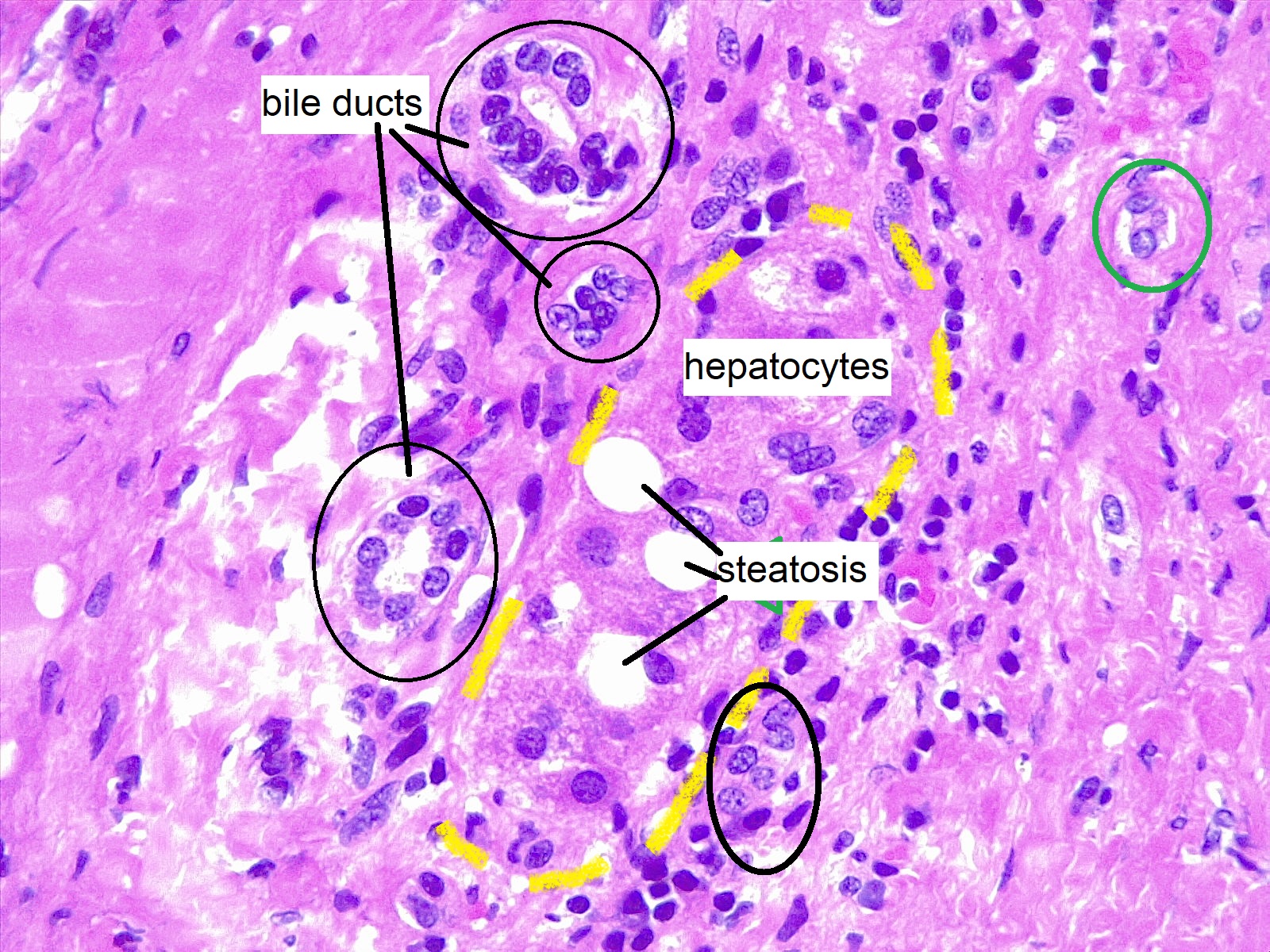[1]
Brunt EM,Janney CG,Di Bisceglie AM,Neuschwander-Tetri BA,Bacon BR, Nonalcoholic steatohepatitis: a proposal for grading and staging the histological lesions. The American journal of gastroenterology. 1999 Sep;
[PubMed PMID: 10484010]
[2]
Wilkins T,Tadkod A,Hepburn I,Schade RR, Nonalcoholic fatty liver disease: diagnosis and management. American family physician. 2013 Jul 1;
[PubMed PMID: 23939604]
[3]
Leoni S, Tovoli F, Napoli L, Serio I, Ferri S, Bolondi L. Current guidelines for the management of non-alcoholic fatty liver disease: A systematic review with comparative analysis. World journal of gastroenterology. 2018 Aug 14:24(30):3361-3373. doi: 10.3748/wjg.v24.i30.3361. Epub
[PubMed PMID: 30122876]
Level 2 (mid-level) evidence
[4]
Schiavo L,Busetto L,Cesaretti M,Zelber-Sagi S,Deutsch L,Iannelli A, Nutritional issues in patients with obesity and cirrhosis. World journal of gastroenterology. 2018 Aug 14
[PubMed PMID: 30122874]
[5]
Seitz HK,Bataller R,Cortez-Pinto H,Gao B,Gual A,Lackner C,Mathurin P,Mueller S,Szabo G,Tsukamoto H, Alcoholic liver disease. Nature reviews. Disease primers. 2018 Aug 16
[PubMed PMID: 30115921]
[6]
Cleveland E,Bandy A,VanWagner LB, Diagnostic challenges of nonalcoholic fatty liver disease/nonalcoholic steatohepatitis. Clinical liver disease. 2018 Apr
[PubMed PMID: 30147867]
[7]
Misra A,Soares MJ,Mohan V,Anoop S,Abhishek V,Vaidya R,Pradeepa R, Body fat, metabolic syndrome and hyperglycemia in South Asians. Journal of diabetes and its complications. 2018 Aug 4
[PubMed PMID: 30115487]
[9]
Tomic D,Kemp WW,Roberts SK, Nonalcoholic fatty liver disease: current concepts, epidemiology and management strategies. European journal of gastroenterology
[PubMed PMID: 30113367]
[10]
Sanyal AJ, Putting non-alcoholic fatty liver disease on the radar for primary care physicians: how well are we doing? BMC medicine. 2018 Aug 24
[PubMed PMID: 30139362]
[11]
Farrell GC, The liver and the waistline: Fifty years of growth. Journal of gastroenterology and hepatology. 2009 Oct;
[PubMed PMID: 19799688]
[12]
Yoo JJ,Kim W,Kim MY,Jun DW,Kim SG,Yeon JE,Lee JW,Cho YK,Park SH,Sohn JH, Recent research trends and updates on nonalcoholic fatty liver disease. Clinical and molecular hepatology. 2018 Aug 8
[PubMed PMID: 30086613]
[13]
Loria P,Adinolfi LE,Bellentani S,Bugianesi E,Grieco A,Fargion S,Gasbarrini A,Loguercio C,Lonardo A,Marchesini G,Marra F,Persico M,Prati D,Baroni GS, Practice guidelines for the diagnosis and management of nonalcoholic fatty liver disease. A decalogue from the Italian Association for the Study of the Liver (AISF) Expert Committee. Digestive and liver disease : official journal of the Italian Society of Gastroenterology and the Italian Association for the Study of the Liver. 2010 Apr;
[PubMed PMID: 20171943]
Level 1 (high-level) evidence
[14]
Matthews DR, Hosker JP, Rudenski AS, Naylor BA, Treacher DF, Turner RC. Homeostasis model assessment: insulin resistance and beta-cell function from fasting plasma glucose and insulin concentrations in man. Diabetologia. 1985 Jul:28(7):412-9
[PubMed PMID: 3899825]
[15]
Katz A, Nambi SS, Mather K, Baron AD, Follmann DA, Sullivan G, Quon MJ. Quantitative insulin sensitivity check index: a simple, accurate method for assessing insulin sensitivity in humans. The Journal of clinical endocrinology and metabolism. 2000 Jul:85(7):2402-10
[PubMed PMID: 10902785]
[16]
Ratziu V,Bellentani S,Cortez-Pinto H,Day C,Marchesini G, A position statement on NAFLD/NASH based on the EASL 2009 special conference. Journal of hepatology. 2010 Aug;
[PubMed PMID: 20494470]
[17]
Torruellas C,French SW,Medici V, Diagnosis of alcoholic liver disease. World journal of gastroenterology. 2014 Sep 7
[PubMed PMID: 25206273]
[18]
Kosmalski M,Mokros Ł,Kuna P,Witusik A,Pietras T, Changes in the immune system - the key to diagnostics and therapy of patients with non-alcoholic fatty liver disease. Central-European journal of immunology. 2018
[PubMed PMID: 30135638]
[19]
Agganis B,Lee D,Sepe T, Liver enzymes: No trivial elevations, even if asymptomatic. Cleveland Clinic journal of medicine. 2018 Aug
[PubMed PMID: 30102591]
[20]
Ratziu V,Charlotte F,Heurtier A,Gombert S,Giral P,Bruckert E,Grimaldi A,Capron F,Poynard T, Sampling variability of liver biopsy in nonalcoholic fatty liver disease. Gastroenterology. 2005 Jun;
[PubMed PMID: 15940625]
[21]
von Schönfels W,Beckmann JH,Ahrens M,Hendricks A,Röcken C,Szymczak S,Hampe J,Schafmayer C, Histologic improvement of NAFLD in patients with obesity after bariatric surgery based on standardized NAS (NAFLD activity score). Surgery for obesity and related diseases : official journal of the American Society for Bariatric Surgery. 2018 Jul 24
[PubMed PMID: 30146425]
[22]
Loman BR,Hernández-Saavedra D,An R,Rector RS, Prebiotic and probiotic treatment of nonalcoholic fatty liver disease: a systematic review and meta-analysis. Nutrition reviews. 2018 Aug 3
[PubMed PMID: 30113661]
Level 1 (high-level) evidence
[23]
Alkhouri N,Poordad F,Lawitz E, Management of nonalcoholic fatty liver disease: Lessons learned from type 2 diabetes. Hepatology communications. 2018 Jul
[PubMed PMID: 30027137]
[24]
Lirussi F,Azzalini L,Orando S,Orlando R,Angelico F, Antioxidant supplements for non-alcoholic fatty liver disease and/or steatohepatitis. The Cochrane database of systematic reviews. 2007 Jan 24;
[PubMed PMID: 17253535]
Level 1 (high-level) evidence
[25]
Angelico F,Burattin M,Alessandri C,Del Ben M,Lirussi F, Drugs improving insulin resistance for non-alcoholic fatty liver disease and/or non-alcoholic steatohepatitis. The Cochrane database of systematic reviews. 2007 Jan 24;
[PubMed PMID: 17253544]
Level 1 (high-level) evidence
[26]
Sanyal AJ,Chalasani N,Kowdley KV,McCullough A,Diehl AM,Bass NM,Neuschwander-Tetri BA,Lavine JE,Tonascia J,Unalp A,Van Natta M,Clark J,Brunt EM,Kleiner DE,Hoofnagle JH,Robuck PR, Pioglitazone, vitamin E, or placebo for nonalcoholic steatohepatitis. The New England journal of medicine. 2010 May 6;
[PubMed PMID: 20427778]
[27]
Baumeister SE,Völzke H,Marschall P,John U,Schmidt CO,Flessa S,Alte D, Impact of fatty liver disease on health care utilization and costs in a general population: a 5-year observation. Gastroenterology. 2008 Jan;
[PubMed PMID: 18005961]
[28]
Esquivel CM,Garcia M,Armando L,Ortiz G,Lascano FM,Foscarini JM, Laparoscopic Sleeve Gastrectomy Resolves NAFLD: Another Formal Indication for Bariatric Surgery? Obesity surgery. 2018 Aug 18
[PubMed PMID: 30121855]
[29]
Coates AM,Hill AM,Tan SY, Nuts and Cardiovascular Disease Prevention. Current atherosclerosis reports. 2018 Aug 9
[PubMed PMID: 30094487]
[30]
Sigler MA,Congdon L,Edwards KL, An Evidence-Based Review of Statin Use in Patients With Nonalcoholic Fatty Liver Disease. Clinical medicine insights. Gastroenterology. 2018
[PubMed PMID: 30013416]


